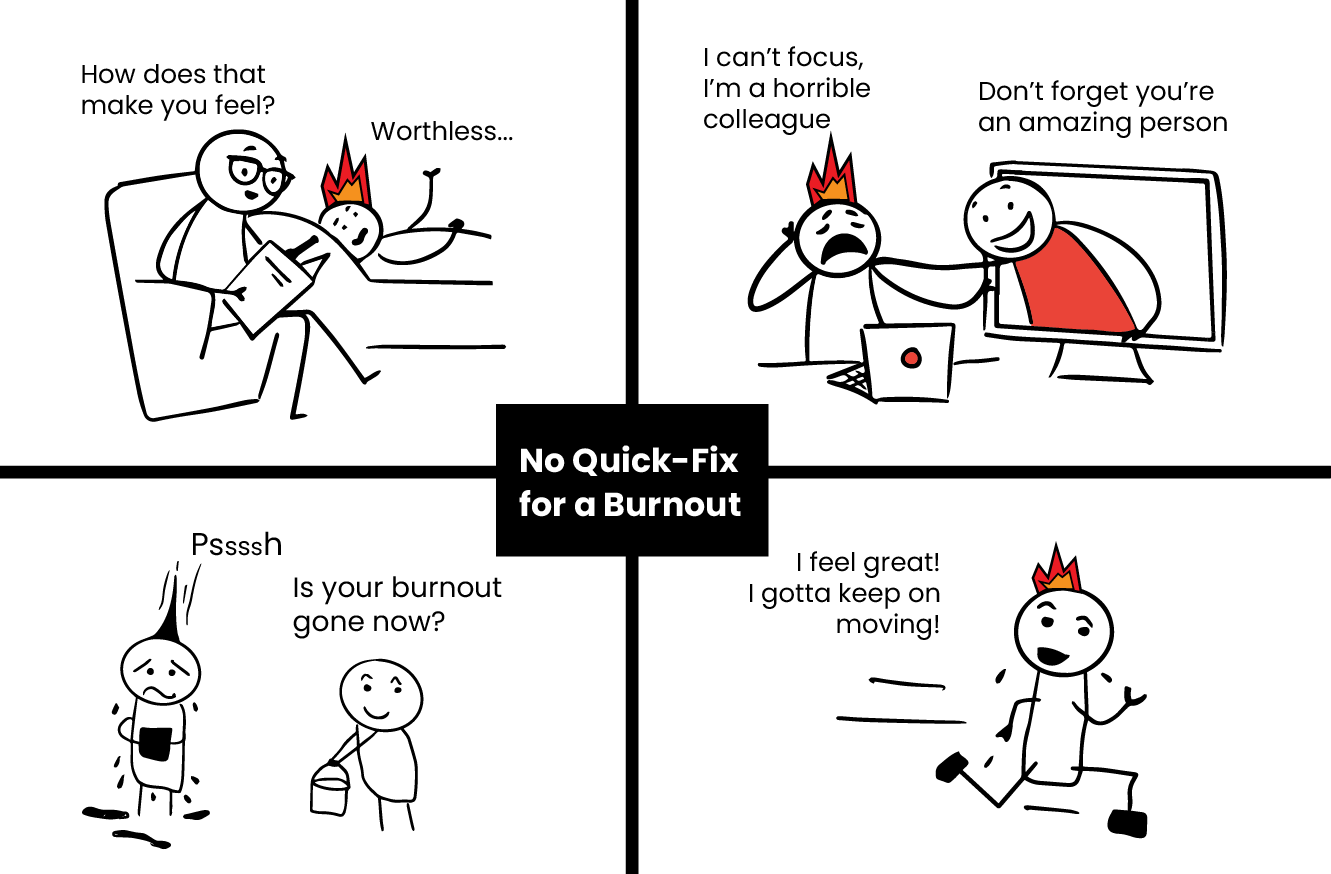After a year spent trying to juggle work and home life, no wonder we are all feeling the burn. A simple Google search will reveal the devastating impact the pandemic has had on our mental health. Some even call it the hidden pandemic. From Front line workers in Healthcare to our own industry, we all feel the effects of extensive exposure to stress.
But what is burnout?
In the Diagnostic and Statistical Manual of Mental Disorders (DSM-5) Burnout is not recognized as a distinct mental disorder in the current revision (dating from 2013). Its definitions for Adjustment Disorders, and Unspecified Trauma- and Stressor-Related Disorder in some cases reflect the condition.
A new version of the International Classification of Diseases, ICD-11, was released in June 2018, for first use in January 2022. ICD is the global standard for diagnostic health information, and the new version has an entry coded and titled "QD85 Burn-out". The ICD-11 describes the condition this way:
Burn-out is a syndrome conceptualized as resulting from chronic workplace stress that has not been successfully managed. It is characterized by three dimensions:
1) feelings of energy depletion or exhaustion;
2) increased mental distance from one’s job, or feelings of negativism or cynicism related to one's job; and
3) reduced professional efficacy.
Burn-out refers specifically to phenomena in the occupational context and should not be applied to describe experiences in other areas of life.
Burnout vs Stress
Burnout and stress are not the same thing. Burnout may be the result of unrelenting stress, but it isn’t the same as too much stress. Stress involves too much of everything: too many pressures that demand too much of you physically and mentally. However, stressed people can still imagine that if they can just get everything under control, they’ll feel better. We can all relate to this feeling after having to juggle most of our responsibilities during various stages of lock down over the past year and half.
But burnout, on the other hand, is about not enough. Being burned out means feeling empty and mentally exhausted, devoid of motivation, and beyond caring. People experiencing burnout often don’t see any hope of positive change in their situations. If excessive stress feels like you’re drowning in responsibilities, burnout is a sense of being all dried up. And while you’re usually aware of being under a lot of stress, you don’t always notice burnout when it happens
What Signs To Look Out for?
Firstly, there are clear physical signs: feeling tired and drained most of the time; recurring headaches or muscle pains, changes in your appetite and or sleep.
Secondly, there are also emotional signs that are typically exhibited as lack of motivation, helplessness, feelings of failure and a negative outlook.
Thirdly, the following behavioural signs can also signal something is up: procrastination, isolating yourself from others, skipping work and maybe you find yourself consuming more alcohol/food/drugs to cope.
Causes of burnout
Burnout often stems from your job. But anyone who feels overworked and undervalued is at risk for burnout, from the hardworking office worker who hasn’t had a vacation in years, to the frazzled stay-at-home mom tending to kids, housework, and an aging parent.
But burnout is not caused solely by stressful work or too many responsibilities. Other factors contribute to it, including your lifestyle and personality traits. In fact, what you do in your downtime and how you look at the world can play just as big of a role in causing overwhelming stress as work or home demands.
Work-related causes of burnout
|
Lifestyle causes of burnout
|
Personality traits can contribute to burnout
|
Determining if you have burnout
The internet is full of self diagnosis tests that are for free, for example this tool. A word of caution is important here: they are not validated tests and might not specifically measure burnout. That said, If the scores on this self test are high, it is imperative that you seek professional help as soon as you can. Early intervention in burnout, as will all mental health related problems, is key.
In 1982 Masleck and Jackson developed the Maslach Burnout Inventory: MBI. The MBI operationalizes burnout as a three-dimensional syndrome consisting of emotional exhaustion, depersonalization, and reduced personal accomplishment. The MBI was developed with a specific goal of assessing an individuals experience of burnout, it is not based on a clinical concept, like for example depression.
What Can Managers and Organisations Do?
Christina Malbach’s research on burnout has more recently focused on developing interventions at both social and organizational levels. She states: ‘preventing burnout can be accomplished by focussing on building engagement and utiliting organisation assessment that include tools for early detection’.
In other words, to focus on employee engagement, both with rewards, recognition and tasks that give energy and motivation, we can impact burnout as an outcome.
What are the most effective ways of dealing with this? Malbach is very clear: preventing burnout should be the primary strategy. Not only due to the cost for the organisation but also the person. In my experience we have seen that people struggle coming back to work as the situation triggered their burnout in the first place. This is especially true if the work and/or job conditions have not changed.
Secondly, she says, focus on engagement: being engaged with your work makes you better able to cope with stress. Why? Because when we are engaged we have an active seeking system, which in its turn releases dopamine (a neurotransmitter linked to motivation and pleasure). The Seeking system is an area of the brain that lights up when we follow our urges of exploration, self expression and purpose. Basically, that feeling of having an urge to try something new, to learn something, that is your seeking system speaking to you.
Does the organization's mission and vision speak to your sense of purpose? Does it encourage you to be yourself and explore? Does it activate your employees seeking system?
Thirdly, focus on the wider organisation versus the individual when it comes to your engagement strategies. For example how do you structure the job and its conditions: is overtime part of your culture or do you promote a healthy work and life balance?
Work or job conditions might work for the majority of your organisation, but it is by all means not one size fits all. Firstly, start to recognise what your size is, and secondly, discuss these insights with your direct manager allowing them to make reasonable adjustments. Realising and becoming more aware of what your stressors are, allows you to start the conversation about what works for you.
Employers should and must create space and support for the individual to achieve a healthy balance between work and personal time. That also includes reasonable adjustment to workload, even if that means for a longer period of time.
When we design our organisation we need to put people first: focus on prevention firstly through both individual and organisational measures, and secondly, invest in support during and after recovery. Giving people the time off (paid), encouragement to seek professional help and the return to work support to prevent both a relapse and even worse, a resignation. No matter the industry, people are our best investment, period.


 Previous article
Previous article
